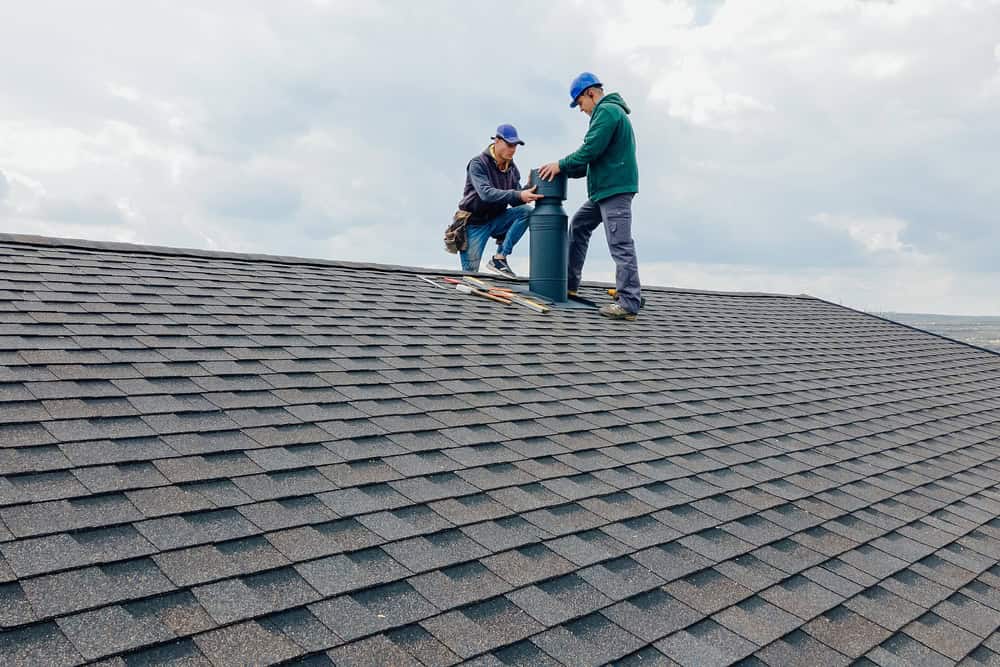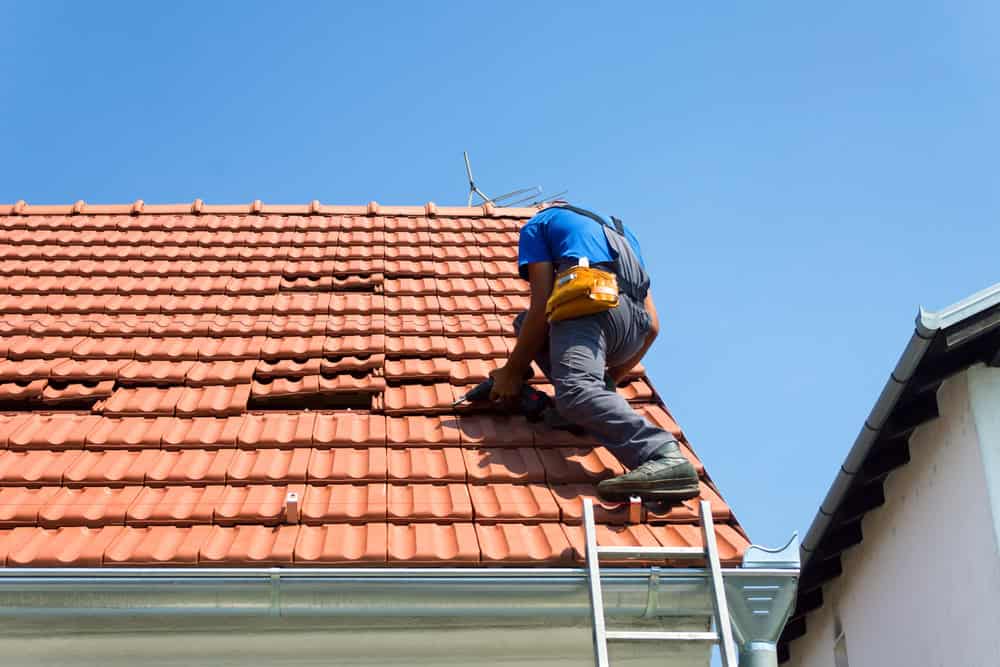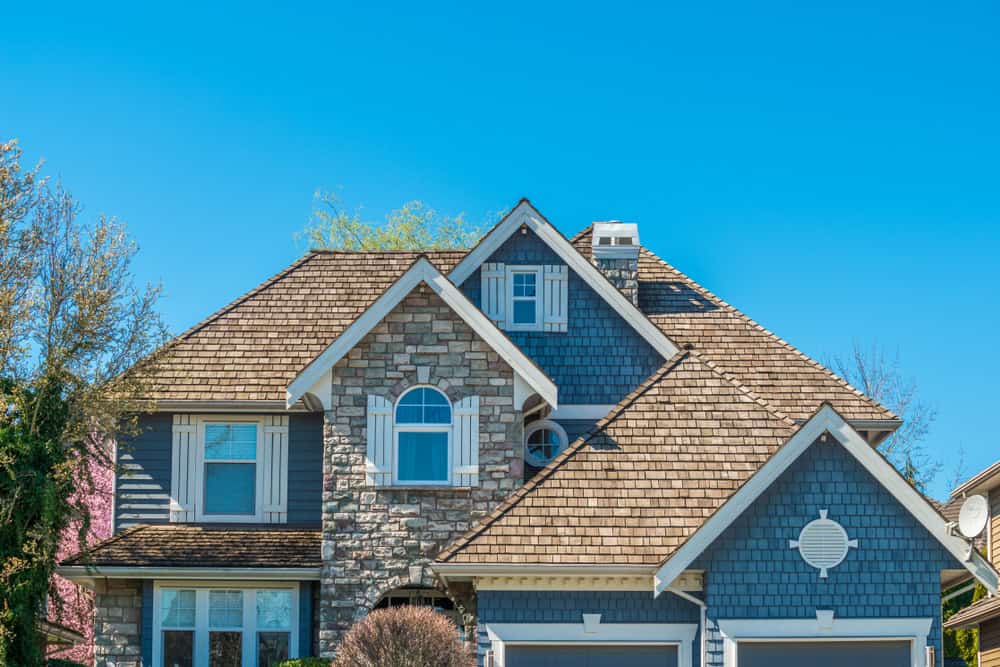Summary:
When Your New London County Home Needs a New Roof
Living in New London County means your roof takes a beating. Between nor’easters dumping heavy snow and summer storms bringing quarter-sized hail, your roof works harder than most. The signs aren’t always obvious, but they’re there if you know what to look for.
Water stains creeping across your ceiling tell a story your roof can’t hide anymore. Missing or cracked shingles after the last big storm. Granules filling up your gutters like sand after a beach trip. These aren’t minor inconveniences—they’re your roof asking for help before small problems become expensive disasters.
Connecticut Weather: Why Your Roof Replacement Can't Wait
Connecticut doesn’t mess around when it comes to weather, and your roof knows it. We see an average of 67 severe thunderstorms each year, with 11 severe hail events that can turn your perfectly good shingles into Swiss cheese. Recent storms have brought 60-mph winds and hail up to an inch in diameter—the kind that leaves dents in metal roofs and cracks asphalt shingles down to the mat.
Winter brings its own challenges. Ice dams form when heat escapes through your roof, melting snow that refreezes at the edges. That ice acts like a dam, forcing water under your shingles and into places it was never meant to go. Your attic insulation gets soaked, your drywall starts to buckle, and suddenly you’re looking at thousands in water damage on top of needing a new roof.
The timing matters more than you think. Connecticut’s severe weather patterns are shifting north, meaning we’re likely to see more frequent and intense hailstorms in coming years. That roof that’s “holding up okay” might not hold up much longer. And here’s something most contractors won’t tell you: insurance companies are getting pickier about roof conditions. They’re using aerial imagery to assess roofs and dropping policies for cosmetic issues that might not even affect performance. A proactive replacement now could save you from scrambling to find coverage later.
Spring and summer bring their own urgency. Storm season peaks between May and September, and that’s also when every other homeowner realizes they need roof work. Contractors get booked solid, material prices can spike, and you might end up waiting months for a crew. The smart move? Plan your replacement during the off-season when contractors have more availability and you’re not competing with storm damage claims.
The Real Cost of Roof Replacement in Connecticut
Let’s talk numbers that actually matter. In Connecticut, you’re looking at $9,705 to $18,491 for a complete roof replacement, with most homeowners spending between $12,000 and $16,000. That’s about 10% higher than the national average, and there are good reasons why.
Connecticut’s building codes are some of the strictest in the country. The 2022 State Building Code requires more underlayment coverage than most manufacturer guidelines—great for protection, but it adds to material costs. Labor costs reflect our skilled workforce and the complexity of working on New England’s varied roof styles, from simple gables to complex dormers and steep pitches that require specialized equipment.
Material choice drives a big chunk of your cost. Asphalt shingles run $4.50 to $9.50 per square foot and handle our weather well for 20-30 years. Metal roofing costs $8.50 to $15 per square foot but can last 40-70 years and reflects summer heat to cut cooling costs. If you’re in a historic district or want that classic New England look, slate runs $15-30 per square foot but can last over a century with proper maintenance.
Don’t forget the extras that can surprise you. Permits typically cost $200-500 depending on your town. If your roof deck needs repairs or reinforcement, add several thousand. Disposal fees for old materials run $500-1,000. And if you’re upgrading to heavier materials like slate, you might need structural reinforcement that adds to both material and labor costs.
Here’s what smart homeowners do: get three detailed quotes, schedule during off-peak times if possible, and remember that the cheapest bid often costs more in the long run. A well-installed roof with quality materials is an investment that pays back in avoided repairs, lower energy costs, and peace of mind during the next big storm.
Choosing the Right Roofing Materials for Connecticut Homes
Your material choice isn’t just about looks—it’s about survival. Connecticut throws everything at your roof: driving rain, heavy snow loads, ice dams, hail, and temperature swings that can crack inferior materials. The right choice depends on your home’s style, your budget, and how long you plan to stay.
Asphalt shingles dominate Connecticut roofs for good reason. They’re affordable, widely available, and modern architectural shingles can handle our weather for 20-30 years. Look for impact-resistant options rated Class 4—they cost a bit more but can earn insurance discounts and hold up better to hail damage.
Impact-Resistant Materials: Your Best Defense Against Connecticut Storms
With hailstorms becoming more frequent and severe in Connecticut, impact-resistant materials aren’t luxury—they’re smart planning. Class 4 impact-resistant shingles can withstand 2-inch hail without cracking, and many insurance companies offer discounts of 10-30% for homes with these materials.
Metal roofing takes impact resistance to another level. Modern metal roofs can handle golf ball-sized hail with minimal damage, and they shed snow and ice better than any other material. The upfront cost is higher, but when you factor in 50+ year lifespan, energy savings from reflective coatings, and virtually no maintenance, metal roofing often costs less over time.
Synthetic materials are gaining ground for good reason. Composite slate looks like the real thing but weighs less and costs significantly less than natural stone. These materials resist cracking, don’t absorb water, and many come with 50+ year warranties. For homeowners who want the classic New England look without the weight and expense of real slate, synthetics deliver.
The key is matching material to your specific situation. Historic districts might require certain materials or colors. Steep roofs benefit from materials that shed water quickly. Homes in wooded areas need materials that resist moss and algae growth. A good contractor will walk you through options that make sense for your home, your budget, and Connecticut’s challenging climate.
Don’t overlook the underlayment—it’s your roof’s second line of defense. Connecticut’s updated building codes require more underlayment coverage than most states, and synthetic underlayments outperform traditional felt in our wet, freeze-thaw conditions. It’s not glamorous, but proper underlayment can mean the difference between a small leak and major water damage.
Energy Efficiency and Long-Term Value in Connecticut
Connecticut’s energy costs make roof efficiency more than an environmental choice—it’s an economic one. Cool roof materials reflect summer heat instead of absorbing it, reducing cooling costs by 10-15%. In winter, proper insulation and ventilation prevent ice dams that can cause thousands in damage.
Metal roofing with reflective coatings performs best in our climate. Light colors reflect heat in summer while dark colors absorb winter sun to help with snow melting. Some metal roofs qualify for federal tax credits and state rebates, making the higher upfront cost more manageable.
Energy Star-certified materials aren’t just good marketing—they deliver measurable savings. These products meet strict efficiency standards and often qualify for utility rebates. When you factor in energy savings over 20-30 years, efficient materials can pay for themselves while keeping your home more comfortable.
Solar integration is becoming more common and cost-effective. Solar-ready roofing systems make future panel installation easier and less expensive. Some manufacturers now offer solar shingles that generate electricity while protecting your home. The technology is improving rapidly, and Connecticut’s net metering policies make solar investment attractive for many homeowners.
The value equation goes beyond energy savings. A new roof typically recoups 60-70% of its cost in increased home value, and energy-efficient materials can push that higher. In Connecticut’s competitive real estate market, an efficient, well-maintained roof becomes a selling point that sets your home apart. More importantly, you’ll enjoy lower utility bills, better comfort, and fewer weather-related problems for decades to come.
Making the Right Choice for Your Connecticut Home
Your roof replacement decision comes down to protection, value, and peace of mind. Connecticut’s weather isn’t getting any easier on roofs, and insurance companies aren’t getting any more forgiving about roof conditions. The homeowners who fare best are those who plan ahead, choose quality materials, and work with contractors who understand local conditions.
Take time to get multiple quotes, ask about warranties, and check references from recent jobs. The lowest bid often costs more in the long run through corners cut and problems that surface later. Look for contractors who understand Connecticut’s building codes, carry proper insurance, and stand behind their work with meaningful warranties.
When you’re ready to move forward with confidence, we bring over 20 years of New London County experience to every project. We understand what Connecticut weather demands from your roof, and we’re committed to delivering the protection and value your home deserves.




